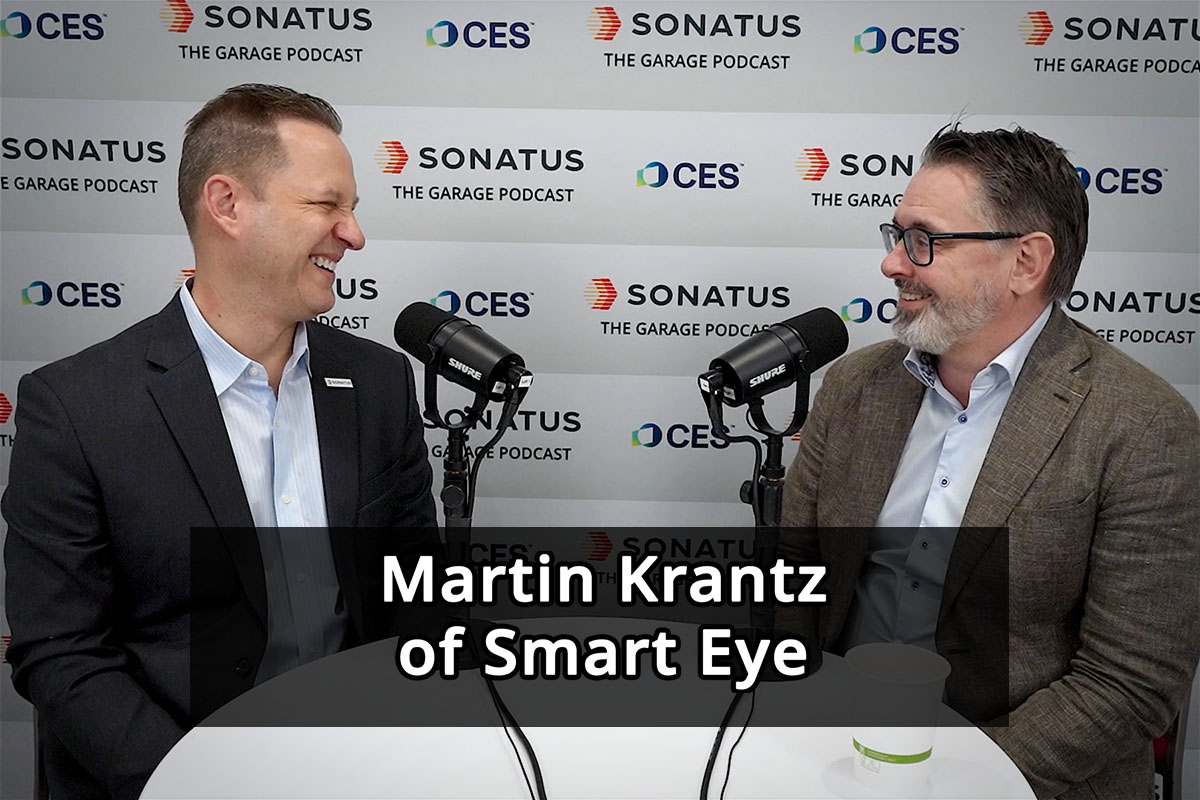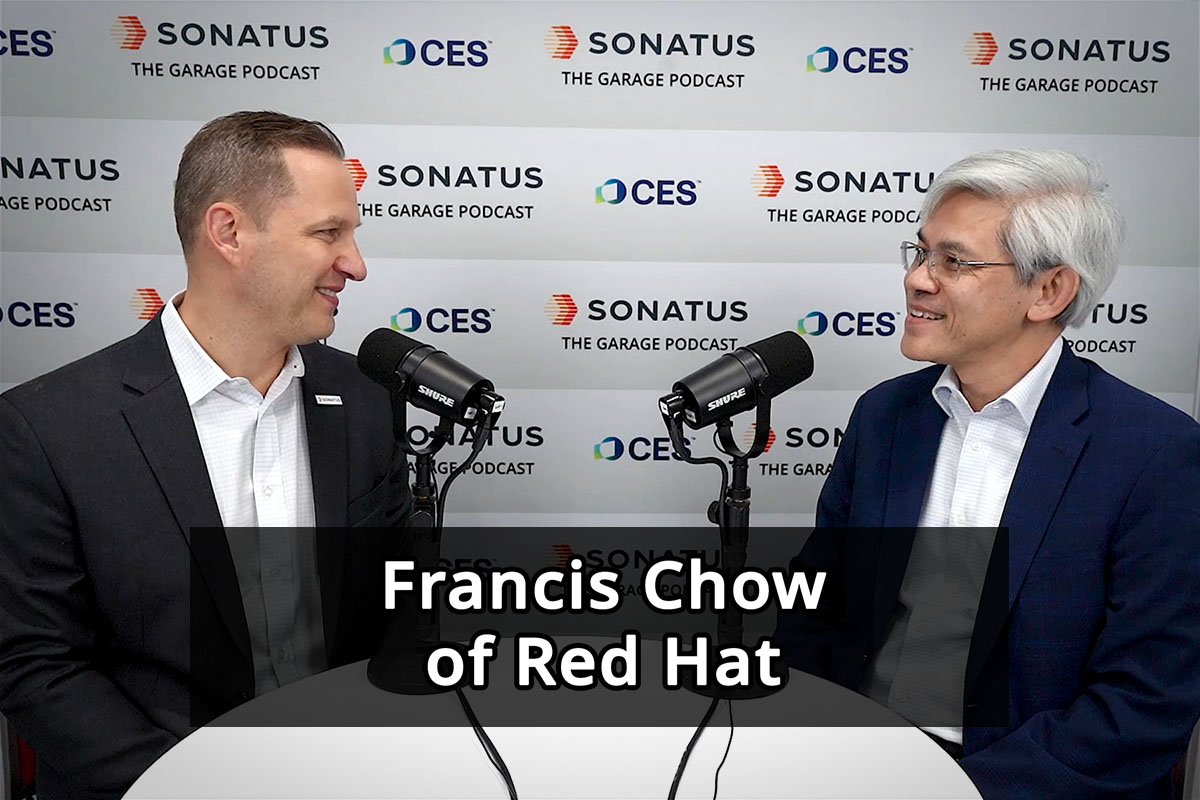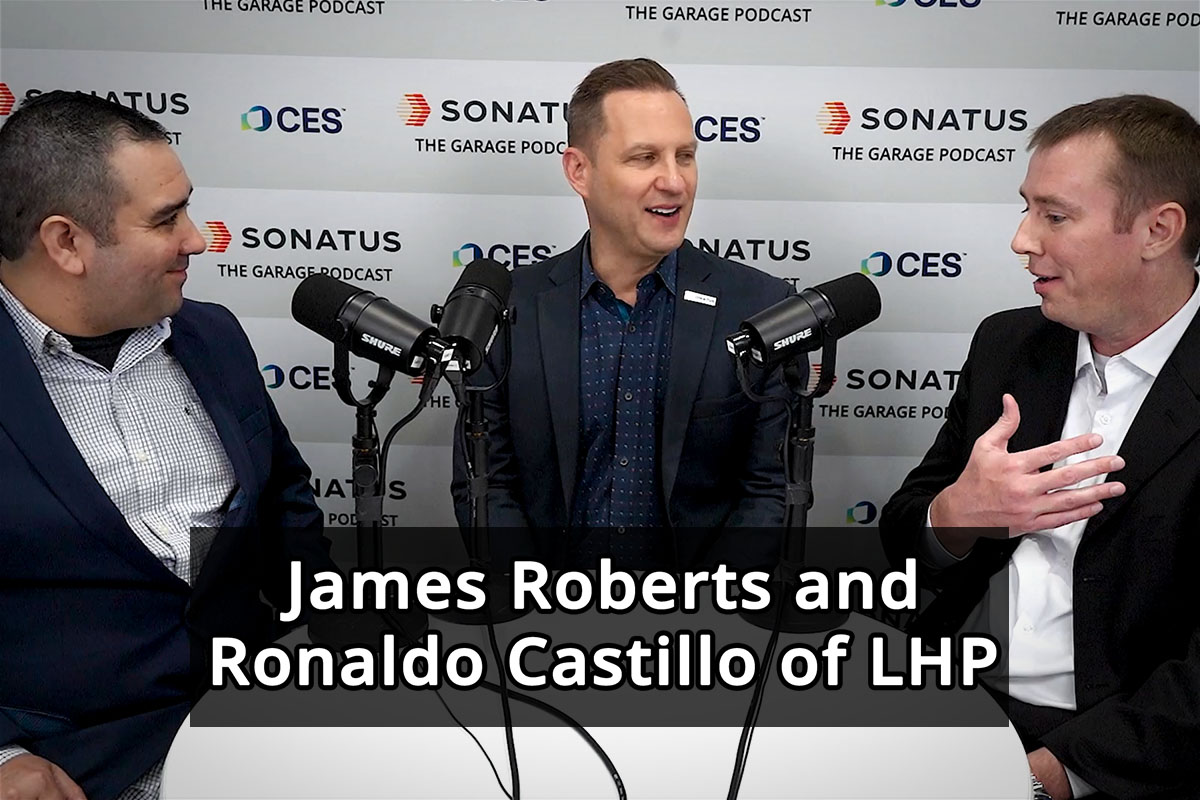The Garage Podcast : S3 Ep6
Prashant Gulati of SDVerse
In this episode, filmed live at the Sonatus booth at CES2025, Prashant Gulati, CEO of SDVerse, talks with host John Heinlein, Ph.D., Chief Marketing Officer from Sonatus about the SDVerse vehicle software marketplace. Prashant explains the goals of SDVerse, its member companies, and explains their business model. He shares some success stories about how this marketplace is gaining traction.
Listen to audio only version:
Episode Transcript | Prashant Gulati of SDVerse
Table of Contents
00:00 Overview:
JOHN: Today in The Garage, live from CES 2025, SDVerse. Let’s go.
JOHN: Welcome to The Garage. I’m John Heinlein, Chief Marketing Officer with Sonatus. We’re recording live at CES 2025 right from the Sonatus booth. Today in The Garage, we have a special guest from SDVerse. My guest today is Prashant Gulati, the CEO of SDVerse. Prashant, welcome to The Garage.
PRASHANT: John, thank you for having me.
JOHN: It’s so nice to have you here. We’ve been talking about this for a while. Maybe we can get to that later. I was so glad that we happened to run into each other at the show, and that we were able to corral you at the last minute to be on the show.
PRASHANT: Yeah.
00:46 Meet Prashant Gulati
JOHN: Tell us a little bit, first, about yourself and your background.
PRASHANT: So, I have a computer science background. I worked in interesting startups. I worked with Fujitsu. Did my MBA, then, from the Indian School of Business. Met my wife there. So, I know something about return on investment.
JOHN: Nice.
PRASHANT: At that point is when I found interest and switched to automotive. Worked with KPIT, Cummins, Faraday Future, and now I’m here. I’m the CEO of SDVerse, a vehicle software marketplace.
JOHN: That’s great. We’ll get into SDVerse in a minute. To start, you’ve got to tell us a fun fact about you.
PRASHANT: So, maybe I’ll make this a fun fact about US, right? Meaning, like I mentioned I’m the CEO of SDVerse, I love my job. You know, we’re doing a lot of really cool stuff, and I owe my current role/position to you. And I don’t think you know that.
JOHN: Tell me how. I don’t think I know that.
PRASHANT: I’ll tell you how. So, like I mentioned, I have a technology background, worked in tech, then in automotive. I did switch out. Got out of automotive for some time. I went to work for an AI company. I was really enjoying it. And that’s when SDVerse was kind of being set up. And the founding members, GM, Magna, Wipro, they were looking for a CEO. And they were talking to their network and people outside. I didn’t know any of them, right? So, they reached out and I was preparing for my interviews. I figured, hey, where can I go to learn more about what’s happening in SDV’s? It was like a new concept two years ago or a year and a half ago when I interviewed. So, I happened to come to YouTube, to your podcast.
JOHN: No.
PRASHANT: Yeah. And, you know, just within a few hours, it was like a crash course in automotive. So, you know, you bring together a lot of people from different companies, backgrounds. I learned a lot. And that just, you know, as you can imagine, was super helpful in my discussions and helped me build conviction around the problem that we are solving, which is software and software discovery and all of that. So, I mean, and I’m not making this up, people know this, I’ve mentioned this before. I owe what I am to the work that you do and the people that you brought together.
JOHN: What an incredible story. I’m so honored and humbled that you found that useful and we’re grateful for all the guests that have come on. You are e ssentially, you’re paying it forward now for the next person like you. But what a what a great story. Thank you for sharing that. I really appreciate that. I always try and come up with a fun fact to share back to our guests. And I guess the fun fact I’ll share is that when I got out of grad school – Ph.D. from Stanford — when I got out of grad school, I considered becoming a professor, which is a normal thing for a Ph.D. And I had some job offers at some very, very reasonable schools, but I decided to go to private sector and so on. But I still have this sort of bug to teach in some sense. And I almost feel like somehow the podcasting is sort of sharing knowledge and — not teaching exactly — but kind of illuminating ideas in the world. So, that kind of gets my teaching bug a little bit.
PRASHANT: I think, you know, I mean, we’re kindred spirits in that regard because a lot of the work that you’re doing is not only for your company, it’s for the industry. And that’s how I think of SDVerse, also, like this was set up for the industry by the industry. Anyway, we’ll talk more.
JOHN: That’s a perfect transition. Thank you so much for those kind words. I really appreciate it.
04:12 About SDVerse
JOHN: Let’s talk about SDVerse, then. Tell us about SDVerse. You mentioned some of the founders. How did it come about? What are the goals?
PRASHANT: So, I think there’s generally been this transition from how certain industries, you know, perfected the art of doing hardware that comes coupled with software, right? To unlock the magic, the promise of software-defined vehicles, one of the key driving factors is that software has to be done separate from hardware, right? Unlocks a lot of use cases, unlocks more and faster updates, more safety applications, so on and so forth. But it’s just hard to do that. That supply chain for procuring software separate from hardware does not exist. So, what SDVerse is doing is, we are a vehicle software marketplace where buyers and sellers of automotive software come and find software. So, as an example, if you’re an OEM, you’re looking for park assist software or lane change or battery management. Before you decide to make it by yourself or before you decide to buy it, you’ll come on our platform, you look for it, we’ll show you these suppliers that are offering that software. We’ll show you how they compare against each other, whether they’re compatible with your technology stack or not. And then you can talk to them, you can issue RFIs on the platform, etc. So, the whole idea originated between our founding members GM, Magna, and Wipro. And, you know, since then we’ve had significant adoption. We have about 17 companies on the platform, including Cummins, including NXP, Valeo, TTTech, FEV, FORVIA, Bosch, and many others. And we have quite a few smaller, high-growth companies, also, Popcorn SAR, SODA Auto out of the UK, and quite a few others. So, I mean, we launched on September 30th.
JOHN: Of 2024.
PRASHANT: Right. So, about three months ago. Interestingly — and we’re very grateful for this — the state of Michigan declared our product launch day as the day of automotive software discovery and innovation in the state of Michigan.
JOHN: That’s fun.
PRASHANT: So, it’s unprecedented, it never happened before. I think we’ve gotten good adoption. GM is one of our power buyers. They have seen good success on the platform. Some others have as well. So, you know, very grateful for how things have turned out so far. We’re getting started.
JOHN: And, you know, there’s an old saying about how obvious ideas are easy once you’ve thought of them.
PRASHANT: Yeah. That’s right.
JOHN: And I think that it seems like such an obvious thing, because if you just do a random Google search or whatever, you’re going to get a damn mess.
PRASHANT: Right.
JOHN: You’re not going to understand the capabilities. You’re not going to be able to compare, in any way, apples to apples. You’re not going to understand compatibility. It’s not useful. Because we’ve tried this, and, you know, historically, when you look for that, it’s hard. So, you’re solving a specific, kind of marketplace problem. So, I think that’s really, really clever.
07:10 The SDVerse Model
JOHN: You know, my understanding is, it’s not like you’re a channel. People don’t have to sell through you. There’s no sales commission. You’re helping to broker to some extent these two. Can you talk a little bit about that business model a little bit?
PRASHANT: Yeah. So, let me just start by picking one thing that we started with.
JOHN: Please.
PRASHANT: I mean, you’re so right about the way we look at things. There’s just our estimate — there are consulting companies like Roland Berger, like McKinsey — we’ve read their estimates. There’s about $40 billion in software spending that happens every year. A large percentage, close to 60%, goes towards development then, you know, validation, verification, and then testing, and all of that. The process of allocating their spend is very unstructured, very analog right now.
JOHN: Inefficient.
PRASHANT: Inefficient, exactly. So, you’re an engineer, you want to buy software, you’re going to pick up the phone and call a handful of suppliers. You’re going to do Google searches. You’ll go to conferences. It takes about 6 to 8 months from discovery to RFQ to RFI. We’re taking that 6 to 8 months down to a few hours, if not a few days.
JOHN: Wow.
PRASHANT: So, that’s the kind of difference. By making it digital, by making it discoverable, we’re making it very structured. We have our IP in about 180 attributes or so, that we collect all of this information. So, that unstructured process is becoming very structured and kind of making a huge difference with this app
08:37 Marketplace Saturation
JOHN: We talked about business model, and I’ll come back to that in a second. But — just because building on what you just said is really interesting — as far as the marketplace goes, two related questions. The first is, how much — and you’re new, so there’s no value judgment at all — how much critical mass are you seeing so far in terms of the progress of filling out the marketplace? What’s your kind of sense of it?
PRASHANT: So, we launched in September with about 160 software products, right? 163. And then, that number went very quickly to 200 plus. Now we’re looking at closer to 250. We are in the final stages of, sort of, going through this. Making sure the quality is right. The information is there. By the end of this month, we’ll have about 250 software components from all of our 17 partners that we have on a platform. And we’re focused on just on – and our partners are as well — not just on the number of software, but the quality of the software, also. And, talking about the business model, to your point, it’s a fixed-fee model. Annual subscription model. There’s no transaction fee. There’s no limits on consumption, usage. So, you could have unlimited logins, unlimited search, unlimited activity. You could buy 100 software, you could buy 10 software. You know, it’s all the same from a cost point of view.
JOHN: Okay. Well, that’s very cost-effective then.
PRASHANT: Yeah.
10:00 Software Flexibility in the SDVerse Platform
JOHN: And what about, when I think about blocks — you talked about some kind of examples — do I think of these as large blocks, small, anywhere in between? I mean, what’s the spectrum?
PRASHANT: So, there’s enough flexibility. We have these partners that I mentioned. Ten of them, the three founding members and a few launch partners, we meet with them. And these are industry experts. We meet for them practically every week. We get a lot of feedback from them on how to develop the platform. So, there is a lot of flexibility built into the platform. Now to answer your question about how this is built is, we mapped the entire vehicle domain. So, you can sell onboard software, offboard software, tools and services on the platform. And within onboard, we have this entire vehicle mapped out so you could sell ADAS solutions, infotainment solutions, fuel injection, battery management, chassis controls, everything. Anything that has anything to do with software can be sold on the platform. Or you can sell right from small components to blocks to reference designs. And all of that is possible on the platform.
JOHN: That’s exciting.
PRASHANT: And just to clarify one thing, our platform is not like GitHub. So, you don’t log in and download software.
JOHN: Of course. Of course.
PRASHANT: Automotive isn’t where you can just download and plug and play it, right?
JOHN: Sure.
PRASHANT: What we do is, we create transparency around information about the software. And then we help OEMs compare software offerings. And then, if they have questions, they can message sellers to get more information. And then you can issue RFIs on the platform.
JOHN: And just to clarify one thing for our listeners — I know the answer, but let’s hear you say this — let’s say someone was on your marketplace and they find some software they like, they’re not signing paper with you. They’re signing with the provider.
PRASHANT: Exactly.
JOHN: You’re helping them to meet and broker and connect, but you’re not in the way of the transaction.
PRASHANT: Yeah. 100%.
JOHN: In a channel kind of a situation, that can be really challenging to have your legals or someone’s legals, that can be a real barrier.
PRASHANT: Right. Absolutely.
JOHN: So, that’s really smart.
PRASHANT: Correct. So, you’re not taking away the procurement function of any company or the legal aspects of it. We help matchmake.
JOHN: Yeah.
PRASHANT: And then we’re going to step away. And then it’s between the OEM and the seller, how they want to transact, how they want to negotiate pricing, warranties, so on and so forth.
12:10 SDVerse Success Stories
JOHN: And do you have any examples of maybe — I’m not looking for secret information — any representative deals or some success stories maybe you could share?
PRASHANT: Yeah. So, we will be publishing some stories early next week as part of our CES recap. We have one OEM where they found a supplier that they would not have talked to otherwise at all.
JOHN: That’s fantastic. Great.
PRASHANT: So, the beauty for the OEM is, you know, you just instantly saved. They found out that somebody was actually doing that work, right? They did not have that on their bid list, earlier. Good for the supplier because they have the possibility to do continued business. And then same thing, we’ve got another case study where they’re using our platform to build their bid list. So, they login to the platform, see who is selling software that they’re interested in, and that seller goes into the bid list. And another long term, but we are very focused right now on getting a few things right.
JOHN: Well, I’ll tell you what. We’ll do you a favor, because the way it works is we don’t stream these episodes live, as you know, so we’ll do some post-processing. So, because this will publish after CES, if you share it with us, send us a link to that case study. We’ll put it in the show notes.
PRASHANT: Okay.
JOHN: So, if you’re listening to this or watching the show, you can read more about it by clicking below on the link that will provide you that.
13:22 Conclusion
Well, look, it’s so wonderful to run into you. We wish you the best of success in this. I think that you’re solving a problem the industry needs. I’m glad we were able to hook up at CES. And good luck with your progress in the weeks ahead.
PRASHANT: Likewise. It’s always good to see you. Thank you so much for this.
JOHN: We had a chance to see you a number of times, and it was just so funny that we were able to capture you while we had our studio here at CES.
PRASHANT: Well, I appreciate the opportunity and getting a chance to share what we are up to at SDVerse, you know, with your audiences. So, I appreciate that.
JOHN: Thanks so much for coming.
PRASHANT: Thank you, John.
JOHN: If you like what you’re seeing here on the show, please like and subscribe so you can see more episodes like this in the future. And we look forward to having you follow us again on another episode of The Garage very soon. Thanks very much.
Recent Episodes

The Garage Podcast
Martin Krantz of Smart Eye

The Garage Podcast
Francis Chow of Red Hat
